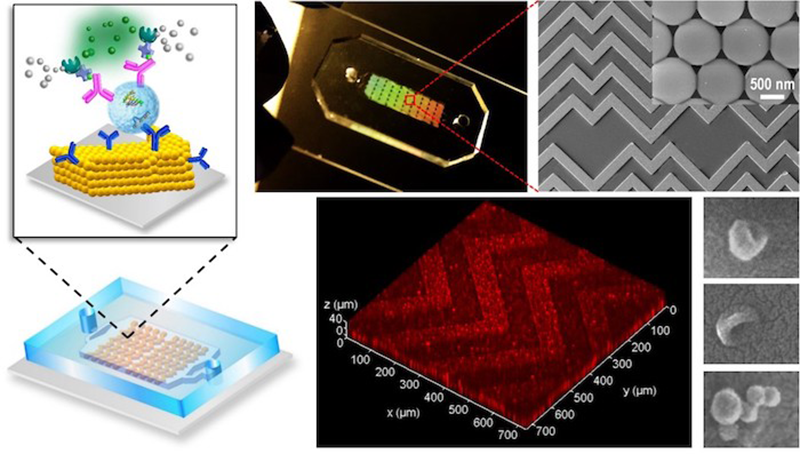Researchers at the University of Kansas, The University of Kansas Cancer Center and KU Medical Center, developed a device that could allow doctors to detect cancer quickly from a droplet of blood or plasma, leading to timelier interventions and better outcomes for patients.
The device, reported in Nature Biomedical Engineering, detects exosomes – tiny vesicles that may can carry biomarkers pointing to the existence of the tumors. Because of their extremely small size, it’s hard to filter out exosomes from blood. This new microfluidic device with nanoscale patterning, separate exosomes from blood and identify whether they carry a cancer biomarker.
Related Graphene Biosensor Could Provide Early Diagnosis of Lung Cancer
“Historically, people thought exosomes were like ‘trash bags’ that cells could use to dump unwanted cellular contents,” said lead author Yong Zeng, Docking Family Scholar and associate professor of chemistry at KU. “But in the past decade, scientists realized they were quite useful for sending messages to recipient cells and communicating molecular information important in many biological functions. Basically, tumors send out exosomes packaging active molecules that mirror the biological features of the parental cells. While all cells produce exosomes, tumor cells are really active compared to normal cells.”

The key innovation on this lab-on-a-chip device is a 3D nanoengineering method that combines and senses biological elements based on a herringbone pattern commonly found in nature, pushing exosomes into contact with the chip’s sensing surface much more efficiently in a process called ‘mass transfer,’ reports KU.
To develop and test their pioneering microfluidic device, Zeng teamed with a tumor-biomarker expert and KU Cancer Center Deputy Director Andrew Godwin at the KU Medical Center’s Department of Pathology & Laboratory Medicine, as well as graduate student Ashley Tetlow in Godwin’s Biomarker Discovery Lab. The collaborators tested the chip’s design using clinical samples from ovarian cancer patients, finding the chip could detect the presence of cancer in a minuscule amount of plasma.
Related Low-Cost Biosensor Can Detect HER-2 Breast Cancer Biomarker
According to Zeng, with the microfluidic chip’s design now proven using ovarian cancer as a model, the chip could be useful in detecting a host of other diseases.












